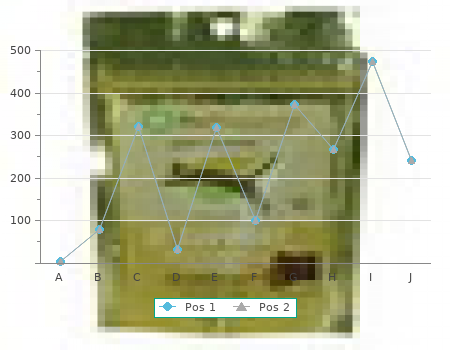Caverta
By H. Hanson. East Tennessee State University. 2018.
No other trials provided data on changes in white blood cell count with sitagliptin discount caverta 100mg with mastercard why smoking causes erectile dysfunction. Hypoglycemia 53 buy caverta 100mg otc erectile dysfunction treatment options, 55 Two studies documented 20 cases of severe hypoglycemia, mostly associated with glipizide (90%) rather than with sitagliptin. In 1 trial 3 patients on glipizide monotherapy discontinued treatment. In the other trial 8 patients receiving glipizide plus metformin required non-medical, third-party assistance compared with 1 patient taking sitagliptin added to metformin. Seven patients taking glipizide plus metformin experienced severe symptoms requiring medical assistance compared with 1 patient receiving sitagliptin plus metformin. The remaining six studies reported no cases of severe hypoglycemia. There was no statistically significant difference in the overall risk of mild to moderate hypoglycemia between sitagliptin and placebo (pooled relative risk 1. The rate of mild-to-moderate hypoglycemia increased slightly when sitagliptin was added to glimepiride (7. Abdominal pain, nausea, vomiting, and diarrhea There were no statistically significant differences between sitagliptin monotherapy and placebo 47, 48, 54 in the risk of abdominal pain (pooled RR 1. However, based on the elevated relative risks, there appears to be a trend for greater risk of experiencing abdominal pain, and nausea with sitagliptin monotherapy compared with placebo. Diabetes Page 72 of 99 Final Report Drug Effectiveness Review Project Compared with metformin monotherapy, sitagliptin was associated with lower incidence of abdominal pain, nausea, vomiting, and diarrhea (Table 23). Combination therapy of sitagliptin plus glimepiride, metformin, or pioglitazone had <6% incidence of abdominal pain, nausea, vomiting, and diarrhea; these results were not significantly different from their comparisons (Table 23). Diabetes Page 73 of 99 Final Report Drug Effectiveness Review Project Table23. Adverseevents of sitagliptincom paredwith oralhypoglycem ic agents a Scott,2007 Goldstein,2006 R osenstock,2006 Charbonnel,2006 Herm ansen,2007 N auck,2007 Adverseevent S100 Glip S100 M 1 M 2 S/Pioglit Pioglit S/M E T M E T S/Glim e Glim e S/M E T Glip/M E T Treatm ent-em ergentadverseevents (%) b Hypoglycem ia 1. Abbreviations:G lim e,glim epiride;G lip,glipiz ide5-20m g/d;G lip/M E T,glipiz ideaddedtom etform in;M 1,m etform in1000m g/d;M 2,m etform in2000m g/d; M E T,m etform in;N R ,notreported;Pioglit,pioglitaz one;S100,sitagliptin100m g daily;S/G lim e,sitagliptinaddedtoglim epiride;S/M E T,sitagliptinaddedto m etform in;S/Pioglit,sitagliptinaddedtopioglitaz one. Diabetes Page 74 of 99 Final Report Drug Effectiveness Review Project Key Question 3. Are there subgroups of patients for which sitagliptin is more or less suitable than other hypoglycemic agents? There was insufficient evidence to perform subgroup analyses based on age, sex, race, ethnicity, baseline A1c, or other characteristics at the study level. Subgroup data not available in publications were supplemented by data provided by the manufacturer. The results from this section should be considered with caution until larger prospective trials evaluating these populations verify the findings. Age, sex, race, body mass index, and prior use of oral hypoglycemic agents 48, 49, 51, 52 Four published trials reported no significant differences in changes in A1c based on subgroups defined by age, sex, race, and BMI. Data on file from 3 additional trials (Rosenstock 59 2006, Aschner 2006, Hermansen 2007) also showed similar findings. Hispanic patients experienced the largest decline in A1c (placebo-corrected difference in A1c from baseline: - 1. Of the 5 studies (Scott 2007, Hermansen 2007, Nonaka 2008, Charbonnel 2006, 59 Goldstein 2007) that stratified groups by prior oral hypoglycemic agent use, only 1 trial 59 (Goldstein 2007) showed a large numerical difference in treatment effect. Patients who were not taking an oral hypoglycemic agent prior to this trial experienced greater decline in A1c across all treatment arms compared with patients who were using oral agents before enrolling into the study. For instance, the change in A1c from baseline for “no prior oral agent use” for sitagliptin versus placebo was -1. Baseline A1c Subgroup information stratified by baseline A1c were found in 10 of 11 trials. Some data were 47-52, 54, 55, 57 available from the 9 published studies and additional information from 4 of these 59 trials (Scott 2007, Charbonnel 2006, Nauck 2006, Scott 2008) were obtained from data on file. Four trials (Charbonnel 2006, Hermansen 2006, Nonaka 2008, Raz 2006) found no significant differences in the change in baseline A1c among those in the following subgroups: 47 <7. In patients with baseline A1c ≥9%, placebo-corrected reductions of -1. For this study, interaction analyses were not conducted (change in A1c from baseline for those with A1c <8%: sitagliptin, -0. Duration of diabetes 48 One trial reported a potential interaction between median baseline duration of diabetes and A1c effects in patients randomized to sitagliptin 100 mg compared with placebo.

Random-effects model: A statistical model in which both within-study sampling error (variance) and between-studies variation are included in the assessment of the uncertainty (confidence interval) of the results of a meta-analysis caverta 50 mg sale erectile dysfunction generic. When there is heterogeneity among the results of the included studies beyond chance buy caverta 100mg with mastercard erectile dysfunction 60 year old man, random-effects models will give wider confidence intervals than fixed-effect models. Randomization: The process by which study participants are allocated to treatment groups in a trial. Adequate (that is, unbiased) methods of randomization include computer generated schedules and random-numbers tables. Randomized controlled trial: A trial in which two or more interventions are compared through random allocation of participants. Regression analysis: A statistical modeling technique used to estimate or predict the influence of one or more independent variables on a dependent variable, for example, the effect of age, sex, or confounding disease on the effectiveness of an intervention. Relative risk: The ratio of risks in two groups; same as a risk ratio. Retrospective study: A study in which the outcomes have occurred prior to study entry. Risk: A way of expressing the chance that something will happen. It is a measure of the association between exposure to something and what happens (the outcome). Risk is the same as probability, but it usually is used to describe the probability of an adverse event. It is the rate of events (such as breast cancer) in the total population of people who could have the event (such as women of a certain age). Risk difference: The difference in size of risk between two groups. In intervention studies, it is the ratio of the risk in the intervention group to the risk in the control group. A risk ratio of 1 indicates no difference between comparison groups. For undesirable outcomes, a risk ratio that is <1 indicates that the intervention was effective in reducing the risk of that outcome. Antihistamines Page 53 of 72 Final Report Update 2 Drug Effectiveness Review Project Run-in period: Run in period: A period before randomization when participants are monitored but receive no treatment (or they sometimes all receive one of the study treatments, possibly in a blind fashion). The data from this stage of a trial are only occasionally of value but can serve a valuable role in screening out ineligible or non-compliant participants, in ensuring that participants are in a stable condition, and in providing baseline observations. A run-in period is sometimes called a washout period if treatments that participants were using before entering the trial are discontinued. This term (or the term ‘‘safe’’) should not be used when evidence on harms is simply absent or is insufficient. Sample size: The number of people included in a study. In research reports, sample size is usually expressed as "n. Larger sample sizes also increase the chance that rare events (such as adverse effects of drugs) will be detected. Sensitivity analysis: An analysis used to determine how sensitive the results of a study or systematic review are to changes in how it was done. Sensitivity analyses are used to assess how robust the results are to uncertain decisions or assumptions about the data and the methods that were used. Side effect: Any unintended effect of an intervention. Side effects are most commonly associated with pharmaceutical products, in which case they are related to the pharmacological properties of the drug at doses normally used for therapeutic purposes in humans. Standard deviation (SD): A measure of the spread or dispersion of a set of observations, calculated as the average difference from the mean value in the sample. Standard error (SE): A measure of the variation in the sample statistic over all possible samples of the same size. The standard error decreases as the sample size increases.

In high doses it is a component of the the most important side-effect generic caverta 100mg amex erectile dysfunction treatment by acupuncture, but the incidence is BEP regime for germ cell tumors of the ovary as well greatly reduced by adequate pre-mediation with as part of the EMA/EP regime for choriocarcinoma caverta 50mg online erectile dysfunction guide. Neutropenia is the main dose-limiting cursors, inter- and intra-strand alkylation and non- toxicity. The nadir occurs 8–11 days after adminis- specific cell cycle phase activity. Administration is tration and recovery occurs within 20 days. Cisplatin is cleared by the kidneys side-effects are alopecia, peripheral neurotoxicity mainly by glomerular filtration. Normal renal func- (mainly neurosensory), peri-treatment myalgia tion must be ensured before administration. The which responds to simple analgesics, asymptomatic most common toxicities are nausea, vomiting and bradycardia, mucositis and inflammation at the in- renal dysfunction. The renal toxicity can be decreased by ensuring rapid clearance of the drug by saline or Methotrexate mannitol diuresis. This has been described under This is a folate antagonist and acts by binding to the section on side-effects. Cellular protein synthesis, urinary output must be maintained during the 24h DNA and RNA production and cellular replica- following infusion, maintaining a urinary output of tion is affected. Leucovorin rescue is used 24 h after at least 100ml/h. Other toxicities are ototoxicity administration of methotrexate to reduce the toxic (irreversible) and peripheral sensory neuropathy. The drug is mostly excreted by the kidney with a small amount through Carboplatin bile. Decreased renal function can result in toxi- This is a platinum compound closely related to cis- city. It has replaced cisplatin in many of the urine alkalinized to reduce renal side-effects. Vomiting, diarrhea, stomatitis and actions and fever. Other side-effects are pulmo- interstitial pneumonitis and lung fibrosis. Doxorubicin, Adriamycin, epirubicin Cyclophosphamide These are anti-tumor antibiotics and their anti- It is an alkylating agent and is largely metabolized cancer actions are by topoisomerase II inhibition, in the liver into active compounds. It is excreted in DNA intercalation and free radical formation. Myelosuppression occurs 8–14 days after Anthracyclines are the major cornerstones of administration. Nausea and vomiting can be chemotherapy treatment in breast cancer. Doxo- delayed, occurring 6–8h after administration, so rubicin is used together with ifosfamide in one of anti-emetic prophylaxis should be given for 24h. Alopecia, skin and nail changes, increased liver It is metabolized in the liver. Most of the drug after enzymes and rarely jaundice can occur. Hemor- metabolism is excreted in the bile with smaller rhagic cystitis (adequate hydration decreases the amounts in the urine. Dose reductions are recom- incidence) and secondary leukemia are other side- mended for hyperbilirubinemia (1. Toxicities Ifosfamide include myelosuppression, nausea, vomiting, mucositis and stomatitis, alopecia, red or pink- This is an alkylating agent and is activated in the colored urine and hyperpigmentation. Post chemotherapy occurs 7–10 days after administration. Renal toxi- anti-emetic prophylaxis should be given for 48h.
Caverta
9 of 10 - Review by H. Hanson
Votes: 26 votes
Total customer reviews: 26 |



